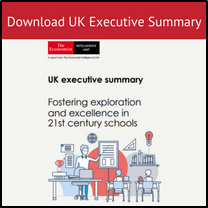Research capacity in lower-income countries: assessing the status quo
Related content

The Hinrich Foundation Sustainable Trade Index 2018
Yet the enthusiasm in Asia for trade does not appear to have waned. This broad societal consensus behind international trade has enabled Asian countries to continue broadening and deepening existing trading relationships, for example, by quickly hammering out a deal for the Comprehensive and Progressive Agreement for Trans-Pacific Partnership (CPTPP) in early 2018 following the US’s withdrawal from its predecessor in 2017.
Asia, then, finds itself in the unique position of helping lead and sustain the global economy’s commitment to free and fair trade. It is in this context that the need for sustainability in trade is ever more crucial.
The Hinrich Foundation Sustainable Trade Index was created for the purpose of stimulating meaningful discussion of the full range of considerations that policymakers, business executives, and civil society leaders must take into account when managing and advancing international trade.
The index was commissioned by the Hinrich Foundation, a non-profit organisation focused on promoting sustainable trade. This, the second edition of the study, seeks to measure the capacity of 20 economies—19 in Asia along with the US—to participate in the international trading system in a manner that supports the long-term domestic and global goals of economic growth, environmental protection, and strengthened social capital. The index’s key findings include:
Countries in Asia, especially the richer ones, have broadly regressed in terms of trade sustainability. Hong Kong is developed Asia’s bright spot, recording a slight increase in its score and topping the 2018 index. Several middle-income countries perform admirably, led by Sri Lanka. For the economic pillar, countries generally performed well in terms of growing their labour forces as well as their per-head GDPs. For the social pillar, sharp drops for some countries in certain social pillar indicators contribute to an overall decline. For the environmental pillar, with deteriorating environmental sustainability in many rich countries, China, Laos and Pakistan are the only countries to record increases in scores. Sustainability is an ever more important determinant of FDI and vendor selection in choosing supply-chain partners. Companies are improving the sustainability of their supply chains by restructuring and broadening relationships with competitors and vendors.
The Global Illicit Trade Environment Index 2018
To measure how nations are addressing the issue of illicit trade, the Transnational Alliance to Combat Illicit Trade (TRACIT) has commissioned The Economist Intelligence Unit to produce the Global Illicit Trade Environment Index, which evaluates 84 economies around the world on their structural capability to protect against illicit trade. The global index expands upon an Asia-specific version originally created by The Economist Intelligence Unit in 2016 to score 17 economies in Asia.
View the Interactive Index >> Download workbook

Breaking Barriers: Agricultural trade between GCC and Latin America
The GCC-LAC agricultural trading relationship has thus far been dominated by the GCC’s reliance on food imports, specifically meat, sugar, and cereals. Over the past two years, however, there has been a notable decline in the share of sugar imported from LAC, and 2017 saw the biggest importers in the GCC—Saudi Arabia and the UAE—impose a ban on Brazilian meat.
Market players on both sides of the aisle are keen to grow the relationship further, but there are hurdles to overcome. In this report, we explore in greater depth the challenges that agricultural exporters and importers in LAC and the GCC face. We consider both tariff and non-tariff barriers and assess key facets of the trading relationship including transport links, customs and certification, market information, and trade finance.
Key findings of the report:
GCC will need to continue to build partnerships to ensure a secure supply of food. Concerns over food security have meant that the GCC countries are exploring ways to produce more food locally. However, given the region’s climate and geology, food imports will remain an important component of the food supply. Strengthening partnerships with key partners such as those in LAC, from which it sourced 9% of its total agricultural imports in 2016, will be vital to food security in the region.
There is a wider range of products that the LAC countries can offer the GCC beyond meat, sugar and cereals. Providing more direct air links and driving efficiencies in shipping can reduce the time and cost of transporting food products. This will, in turn, create opportunities for LAC exporters to supply agricultural goods with a shorter shelf life or those that are currently too expensive to transport. Exporters cite examples such as berries and avocados.
The GCC can engage small and medium-sized producers that dominate the LAC agricultural sector by offering better trade financing options and connectivity. More direct air and sea links can reduce the cost of transporting food products, making it viable for smaller players to participate in agricultural trade. The existing trade financing options make it prohibitive for small and medium-sized players too. Exporters in LAC suggest that local governments and private companies in the GCC can offer distribution services with immediate payments to smaller suppliers at a discount.
Blockchain technology is poised to address key challenges market players face in agricultural trade. Through a combination of smart contracts and data captured through devices, blockchain technology can help to reduce paperwork, processing times and human error in import and export processes. It can improve transparency, as stakeholders can receive information on the state of goods and status of shipments in real time. Finally, it can help with food safety and quality management—monitoring humidity and temperature, for instance, along the supply chain can help to pinpoint batches that may be contaminated, minimising the need for a blanket ban on a product.
Workplace Evolution: Empowering employees in a flexible work environment
The changing nature of work is in turn redefining the role of the office. Previously a space in which to concentrate on tasks for the day, it is now primarily a space for interaction with colleagues and clients to exchange ideas. In this report, we speak to architects and companies behind high-profile office developments to understand current work trends and how they are influencing a company’s approach to employees and office design.
Related content

Safe Cities Index 2019
Cities across the globe are growing in size and in terms of how connected they are. Which cities are best at keeping their citizens safe and how do they do it? An updated version of the Safe Cities Index 2017, the 2019 index covers 60 cities across the globe and defines how to measure security in a rapidly urbanising world.
Visit the Safe Cities hub for more interactive content >>

Five-star cities: Asia’s best cities for work and recreation
The 2019 bleisure barometer: Asia’s best cities for work and recreation evaluates the bleisure potential of various cities in Asia-Pacific, based on a survey of global business travellers. It reveals that while Asia’s top bleisure destinations provide the right balance of business activity, high-quality infrastructure and top-flight leisure experiences, many less obvious choices stand out for different reasons, often involving opportunities for cultural exchange.
The key findings are:
Tokyo is Asia’s best bleisure destination, ranking first out of 26 cities in the region. The Japanese capital is joined by Singapore, Sydney, Hong Kong and Melbourne as a “five-star” bleisure city, as determined by a quantitative barometer constructed for this programme, based on survey responses. Raw scores and number of stars may not correlate perfectly, as the former is an absolute measure and the latter a relative one (see appendix I for the full methodology of barometer and star scoring). Less-affluent cities comprise most of the one-star destinations, with notable exceptions. Business travel may prove arduous in the emerging metropolises of South and South-east Asia, but greater GDP is hardly the only predictor of a high bleisure score. New Delhi and Hanoi tie for second (alongside Beijing and Hong Kong) in the category measuring opportunities for cultural experiences, providing them a leg up over cities with stronger infrastructure and a bigger international business scene. Shanghai and Beijing, often criticised for their poor urban environments, rank highly on business aspects such as quality of international links and level of digital connectivity, helping them best more ostensibly liveable cities, including Auckland, Brisbane, Seoul, Taipei and Wellington, in the overall ranking. Wealthy Adelaide falls in the one-star category, dragged down by low scores for quality of food and beverage and opportunity for cultural experiences. Ease of transportation is the top urban factor in a successful business trip. Other key aspects include street safety and quality of business venues, according to our survey. Regional differences emerge in these findings, with Asian executives prioritising transportation, while Europeans are less concerned about safety than those hailing from elsewhere. Dining out and enjoying local heritage are the chief ways busy business travellers unwind. These two factors rank well ahead of the third-place finisher, visiting an art museum or gallery. Regional nuances crop up here too: Asian executives are less likely to frequent the local drinking scene and more inclined to visit an amusement park.The report, including full scoring and star bracket methodology, as well as an infographic and video, can be found at: https://fivestarcities.economist.com/

Flexible cities: The future of Australian infrastructure
As this report finds, cities need smarter and more flexible infrastructure to address these challenges— infrastructure that can make better use of existing space and resources, and that can adapt in accordance with uncertain, fast-moving future realities.
The idea of ‘flexible’ or future-proof cities is becoming more important. Imagine a roadway that works for today’s vehicles as well as tomorrow’s autonomous cars, an energy system that can provide reliable power despite spikes in usage (such as those that may come from greater adoption of electric cars), pylons that are mindful of overhead drones, a building that transforms depending on needs of its inhabitants, or an autonomous rail system that can double its capacity simply through changes to its operating algorithms.
Delivering infrastructure that is more responsive and flexible to future needs requires technological innovation as much as it does new approaches to planning, financing and procurement.
In this report, The EIU investigates the challenges facing cities and urban infrastructure in the near future, and the global trends and innovations in infrastructure that will be crucial in response. With an eye to international best practice, it focuses on the challenges and opportunities pertinent to Australia. Here, major cities are facing significant population growth forecasts that call into question their ability to continuously provide a high quality of life for their citizens. Challenges pertain to both meeting infrastructure need, and in delivering solutions, through effective planning, financing and collaboration, in time and on budget.
The key findings of the research include:
Australia is experiencing a number of growing pains. Population growth in cities is a universal trend—urban population is expected to rise by two-thirds by 2050 globally—but it is particularly acute in Australia, where cities must meet double or greater user demand without conflicting with the global targets set by the Paris Agreement and Agenda 2030. Such growth challenges the capacity and sustainability of cities’ infrastructure and the networks that connect them. Planners must also reckon with an ageing population, deteriorating infrastructure, adverse environmental change and evolving working patterns, altering the dynamics of how people operate in and navigate cities. A failure to respond to these challenges could result in declining economic productivity and threats to the quality of life for which Australian cities are renowned. To meet future demands, infrastructure builders across the globe are considering how they can expand the capacity of existing infrastructure and bolster the flexibility of new works. Updated networks like roads, railways and pipelines often need to accommodate twice their original usage demand without changing their physical footprint. The effective adoption of digital technology will be key to this transformation, such as updating metro systems with driverless trains and automatic controls, informed by large amounts of real-time data, to allow a more efficient use of capacity. Water and energy supply systems must also prove reliable in the face of natural disasters, shifts in market prices (such as oil or gas price shocks) or changes to supply sources (backups for solar generation, for example). New technological techniques and applications can help builders work more quickly, safely and cost-effectively. The design, construction and maintenance of infrastructure projects are increasingly driven by digital technologies, unlocking cost and time savings in building roads, railways and entire city centres. The cost and energy required to build with the highest safety margins could be reduced by remote monitoring through embedded sensors. Efficient, low-impact construction techniques will be important to reduce the disruption that construction and repairs have on metropolitan areas, too. Stakeholders are increasingly reliant on data to plan, build and optimise projects. Data generated by citizens and connected infrastructure are increasingly critical in delivering and operating smarter cities. Governments and infrastructure providers increasingly benefit from adding this data to their modelling and scenario planning. Open data can also allow citizens and third parties to solve problems or invent new applications that benefit all, from crowdsourcing potholes or reporting crime, to building new navigation apps. Australia’s state and federal governments, citizens, and commercial partners are still grappling with data ownership issues, but all are working to address the challenges. Mature financing and procurement practices help Australia attract international investment. Attractive markets encourage international competition for infrastructure procurement. Indeed, many of today’s projects are contracted to international players who bring advanced, ambitious proposals to government. And as demand for more advanced, flexible projects rises, players are increasingly presenting envelope-pushing approaches to win bids. Collaboration between governments, universities and commercial players is increasing, sparking innovation. Universities are playing a larger role in the advancement and application of infrastructure technology by partnering with private companies and government. New forms of collaboration are also more apparent among federal, state and local governments, and between governments and the private sector, potentially easing the problems posed by the historically disjointed nature of decision-making and long-term planning on major infrastructure. Australia has a strong record of robust infrastructure investment. Its leaders, institutions and businesses have identified the urgency and importance of responsible and smart infrastructure initiatives. As a result, Australia is well placed to wrestle with the challenges it faces, and, as it navigates infrastructure challenges earlier and with greater urgency than some other countries, could be a model for how other countries—in the OECD and in Asia-Pacific—can build smarter, more flexible, next-generation infrastructure in their cities.
Entrepreneurs as change agents of sustainable development
Related content

Resetting the agenda: How ESG is shaping our future
The Covid-19 pandemic has exposed a wealth of interconnections – between ecological and human wellbeing, between economic and environmental fragility, between social inequality and health outcomes, and more. The consequences of these connections are now filtering through, reshaping our society and economy.
In this setting, the need to integrate environmental, social and governance (ESG) factors when investing has become even more critical. Institutional investors must employ ESG not just to mitigate risks and identify opportunities, but to engage with companies to bring about the positive change needed to drive a sustainable economic recovery in the post-Covid world.
In order to understand how ESG could be both a new performance marker and a growth driver in this environment, as well as how institutional investors are using ESG to make investment decisions and to assess their own performance, The Economist Intelligence Unit (EIU), sponsored by UBS, surveyed 450 institutional investors working in asset and wealth management firms, corporate pension funds, endowment funds, family offices, government agencies, hedge funds, insurance companies, pension funds, sovereign wealth funds and reinsurers in North America, Europe and Asia-Pacific.
Download the report and infographic to learn more.

Charting the course for ocean sustainability in the Indian Ocean Rim
Charting the course for ocean sustainability in the Indian Ocean Rim is an Economist Intelligence Unit report, sponsored by Environment Agency Abu Dhabi and the Department of Economic Development Abu Dhabi, which highlights key ocean challenges facing the Indian Ocean Rim countries and showcases initiatives undertaken by governments and the private sector in the region to address these challenges.
Click here to view the report.

Fixing Asia's food system
The urgency for change in Asia's food system comes largely from the fact that Asian populations are growing, urbanising and changing food tastes too quickly for many of the regions’ food systems to cope with. Asian cities are dense and are expected to expand by 578m people by 2030. China, Indonesia and India will account for three quarters of these new urban dwellers.
To study what are the biggest challenges for change, The Economist Intelligence Unit (EIU) surveyed 400 business leaders in Asia’s food industry. According to the respondents, 90% are concerned about their local food system’s ability to meet food security needs, but only 32% feel their organisations have the ability to determine the success of their food systems. Within this gap is a shifting balance of responsibility between the public and private sectors, a tension that needs to and can be strategically addressed.
Fostering exploration and excellence in 21st century schools: UK Executive Summary
16866
Related content

Fostering exploration and excellence in 21st century schools

The giving chain: How philanthropy is driving progress in Asian education
Education is widely seen as the main driver of long-term social impact in Asia, and educational philanthropists are increasingly targeting innovative projects that help marginalised and deprived communities.
How to contribute wisely to education in Asia? Read the report >>
Sparking economic progress through education
Through Q&As with luminaries in a number of sectors across the world, interviews aim to surface insights for policy makers, business leaders and other stakeholders as they consider actions to improve the quality of, and access to, education, to fortify their country’s economic, social and geopolitical fabric.
The series is supported by The International Commission on Financing Global Education Opportunity, which just presented a report urging governments to expand access to education to the UN Secretary-General, Mr Ban Ki-moon, and the Commission Co-Convenors during the UN General Assembly in New York.
The report, entitled "The Learning Generation: Investing in Education for a Changing World,” underscores the importance of quality education to address the social, economic, and security challenges of our time. For more on the report please go to educationcommission.org
Related content

Steering through collaboration: CFOs driving new priorities for the future
It is well established that the modern CFO has a more strategic role to play in a business, but a clear action plan to achieve this is lacking. A key element of this is helping the business to deal with change. Some changes are planned: launching a new product or service, setting up operations in a new region or acquiring a competitor. Others may be unexpected: a major disruption to supply-chain operations, the emergence of new regulation and legal reporting requirements or the unpredictable impacts of global economic uncertainty.
Either way, when asked about the biggest challenges they face in executing their day-to-day activities, change is a recurring theme, according to a new survey of 800 CFOs and senior finance executives, conducted by The Economist Intelligence Unit. Managing unexpected changes to financial forecasts and adapting finance processes to rapidly evolving business models are top of mind.
Managing unexpected changes to financial forecasts and adapting finance processes to rapidly evolving business models are top challenges finance executives face in executing their day to-day activities.
Finance executives are also concerned with identifying how to align strategic, financial and operational plans towards common objectives and meaningfully analysing data across business units and regions. “All functions are working to meet these challenges and, as a finance head, we have to have visibility across all functions, how they are progressing [towards meeting goals] and ensuring that their direction is in line with overall strategic goals,” says Lalit Malik, CFO of Dabur, an Indian consumer goods manufacturer. It is incumbent upon CFOs therefore to be prepared not only to help their own function navigate uncharted territory, but the rest of the business too. That means breaking down the silos that commonly exist in organisations, in order to collaborate closely across functions, sharing information and data in the pursuit of common objectives.
All functions are working to meet these challenges and, as a finance head, we have to have visibility across all functions, how they are progressing [towards meeting goals] and ensuring that their direction is in line with overall strategic goals - Lalit Malik, CFO of Dabur, an Indian consumer goods manufacturer.
The clear custodian of collaboration
There are a number of reasons why the role of leading cross-company collaboration around steering should fall to the CFO and their team. First, through the activities of budgeting, the finance function is the custodian of the clear, quantitative expression of management expectations and determines how resources such as cash and people will be allocated in order to achieve them. In our survey, 90% of respondents say that finance should facilitate collaborative enterprise planning to ensure that operational plans are aligned with financial and strategic plans.
Second, through performance management, the finance function is the gatekeeper for critical data that illustrate how well—or otherwise—the company is rising to the challenge of change. That includes data relating to sales, supply chain and delivery, which need to be reported back to the business in ways that help drive improved decisionmaking. Our survey reveals that companies in which finance executives feel empowered to drive strategic decisions across business functions are more likely to report a higher financial performance in fiscal year 2016/17 and 2017/18 and anticipate higher growth rates for 2019/20.
Download Complete Executive Summary PDF

Transforming data into action
As businesses generate and manage vast amounts of data, companies have more opportunities to gather data, incorporate insights into business strategy and continuously expand access to data across the organisation. Doing so effectively—leveraging data for strategic objectives—is often easier said than done, however. This report, Transforming data into action: the business outlook for data governance, explores the business contributions of data governance at organisations globally and across industries, the challenges faced in creating useful data governance policies and the opportunities to improve such programmes. Learn more by downloading our whitepaper below.

Rethinking professional services in an age of disruption
An entrepreneur's perspective
More from this series

infographic
What's really driving today's young innovators?
Related content

Steering through collaboration: CFOs driving new priorities for the future
It is well established that the modern CFO has a more strategic role to play in a business, but a clear action plan to achieve this is lacking. A key element of this is helping the business to deal with change. Some changes are planned: launching a new product or service, setting up operations in a new region or acquiring a competitor. Others may be unexpected: a major disruption to supply-chain operations, the emergence of new regulation and legal reporting requirements or the unpredictable impacts of global economic uncertainty.
Either way, when asked about the biggest challenges they face in executing their day-to-day activities, change is a recurring theme, according to a new survey of 800 CFOs and senior finance executives, conducted by The Economist Intelligence Unit. Managing unexpected changes to financial forecasts and adapting finance processes to rapidly evolving business models are top of mind.
Managing unexpected changes to financial forecasts and adapting finance processes to rapidly evolving business models are top challenges finance executives face in executing their day to-day activities.
Finance executives are also concerned with identifying how to align strategic, financial and operational plans towards common objectives and meaningfully analysing data across business units and regions. “All functions are working to meet these challenges and, as a finance head, we have to have visibility across all functions, how they are progressing [towards meeting goals] and ensuring that their direction is in line with overall strategic goals,” says Lalit Malik, CFO of Dabur, an Indian consumer goods manufacturer. It is incumbent upon CFOs therefore to be prepared not only to help their own function navigate uncharted territory, but the rest of the business too. That means breaking down the silos that commonly exist in organisations, in order to collaborate closely across functions, sharing information and data in the pursuit of common objectives.
All functions are working to meet these challenges and, as a finance head, we have to have visibility across all functions, how they are progressing [towards meeting goals] and ensuring that their direction is in line with overall strategic goals - Lalit Malik, CFO of Dabur, an Indian consumer goods manufacturer.
The clear custodian of collaboration
There are a number of reasons why the role of leading cross-company collaboration around steering should fall to the CFO and their team. First, through the activities of budgeting, the finance function is the custodian of the clear, quantitative expression of management expectations and determines how resources such as cash and people will be allocated in order to achieve them. In our survey, 90% of respondents say that finance should facilitate collaborative enterprise planning to ensure that operational plans are aligned with financial and strategic plans.
Second, through performance management, the finance function is the gatekeeper for critical data that illustrate how well—or otherwise—the company is rising to the challenge of change. That includes data relating to sales, supply chain and delivery, which need to be reported back to the business in ways that help drive improved decisionmaking. Our survey reveals that companies in which finance executives feel empowered to drive strategic decisions across business functions are more likely to report a higher financial performance in fiscal year 2016/17 and 2017/18 and anticipate higher growth rates for 2019/20.
Download Complete Executive Summary PDF

Transforming data into action
As businesses generate and manage vast amounts of data, companies have more opportunities to gather data, incorporate insights into business strategy and continuously expand access to data across the organisation. Doing so effectively—leveraging data for strategic objectives—is often easier said than done, however. This report, Transforming data into action: the business outlook for data governance, explores the business contributions of data governance at organisations globally and across industries, the challenges faced in creating useful data governance policies and the opportunities to improve such programmes. Learn more by downloading our whitepaper below.

Rethinking professional services in an age of disruption
Tailoring education for the 21st century: perspectives from educators
Related content

Fostering exploration and excellence in 21st century schools

The giving chain: How philanthropy is driving progress in Asian education
Education is widely seen as the main driver of long-term social impact in Asia, and educational philanthropists are increasingly targeting innovative projects that help marginalised and deprived communities.
How to contribute wisely to education in Asia? Read the report >>
Sparking economic progress through education
Through Q&As with luminaries in a number of sectors across the world, interviews aim to surface insights for policy makers, business leaders and other stakeholders as they consider actions to improve the quality of, and access to, education, to fortify their country’s economic, social and geopolitical fabric.
The series is supported by The International Commission on Financing Global Education Opportunity, which just presented a report urging governments to expand access to education to the UN Secretary-General, Mr Ban Ki-moon, and the Commission Co-Convenors during the UN General Assembly in New York.
The report, entitled "The Learning Generation: Investing in Education for a Changing World,” underscores the importance of quality education to address the social, economic, and security challenges of our time. For more on the report please go to educationcommission.org
Related content

Fostering exploration and excellence in 21st century schools

The giving chain: How philanthropy is driving progress in Asian education
Education is widely seen as the main driver of long-term social impact in Asia, and educational philanthropists are increasingly targeting innovative projects that help marginalised and deprived communities.
How to contribute wisely to education in Asia? Read the report >>
Sparking economic progress through education
Through Q&As with luminaries in a number of sectors across the world, interviews aim to surface insights for policy makers, business leaders and other stakeholders as they consider actions to improve the quality of, and access to, education, to fortify their country’s economic, social and geopolitical fabric.
The series is supported by The International Commission on Financing Global Education Opportunity, which just presented a report urging governments to expand access to education to the UN Secretary-General, Mr Ban Ki-moon, and the Commission Co-Convenors during the UN General Assembly in New York.
The report, entitled "The Learning Generation: Investing in Education for a Changing World,” underscores the importance of quality education to address the social, economic, and security challenges of our time. For more on the report please go to educationcommission.org
Fostering exploration and excellence in 21st century schools
More from this series

article
Fostering exploration and excellence in 21st century schools: UK Executive ...

blog
Tailoring education for the 21st century: perspectives from educators
Editor's note: This week our Google for Education team joined thousands of educators at the BETT educational technology

infographic
Preparing students for the future of work
Related content

The giving chain: How philanthropy is driving progress in Asian education
Education is widely seen as the main driver of long-term social impact in Asia, and educational philanthropists are increasingly targeting innovative projects that help marginalised and deprived communities.
How to contribute wisely to education in Asia? Read the report >>
Sparking economic progress through education
Through Q&As with luminaries in a number of sectors across the world, interviews aim to surface insights for policy makers, business leaders and other stakeholders as they consider actions to improve the quality of, and access to, education, to fortify their country’s economic, social and geopolitical fabric.
The series is supported by The International Commission on Financing Global Education Opportunity, which just presented a report urging governments to expand access to education to the UN Secretary-General, Mr Ban Ki-moon, and the Commission Co-Convenors during the UN General Assembly in New York.
The report, entitled "The Learning Generation: Investing in Education for a Changing World,” underscores the importance of quality education to address the social, economic, and security challenges of our time. For more on the report please go to educationcommission.org

Resetting the agenda: How ESG is shaping our future
The Covid-19 pandemic has exposed a wealth of interconnections – between ecological and human wellbeing, between economic and environmental fragility, between social inequality and health outcomes, and more. The consequences of these connections are now filtering through, reshaping our society and economy.
In this setting, the need to integrate environmental, social and governance (ESG) factors when investing has become even more critical. Institutional investors must employ ESG not just to mitigate risks and identify opportunities, but to engage with companies to bring about the positive change needed to drive a sustainable economic recovery in the post-Covid world.
In order to understand how ESG could be both a new performance marker and a growth driver in this environment, as well as how institutional investors are using ESG to make investment decisions and to assess their own performance, The Economist Intelligence Unit (EIU), sponsored by UBS, surveyed 450 institutional investors working in asset and wealth management firms, corporate pension funds, endowment funds, family offices, government agencies, hedge funds, insurance companies, pension funds, sovereign wealth funds and reinsurers in North America, Europe and Asia-Pacific.
Download the report and infographic to learn more.
Embracing the chatbot
Related content

Steering through collaboration: CFOs driving new priorities for the future
It is well established that the modern CFO has a more strategic role to play in a business, but a clear action plan to achieve this is lacking. A key element of this is helping the business to deal with change. Some changes are planned: launching a new product or service, setting up operations in a new region or acquiring a competitor. Others may be unexpected: a major disruption to supply-chain operations, the emergence of new regulation and legal reporting requirements or the unpredictable impacts of global economic uncertainty.
Either way, when asked about the biggest challenges they face in executing their day-to-day activities, change is a recurring theme, according to a new survey of 800 CFOs and senior finance executives, conducted by The Economist Intelligence Unit. Managing unexpected changes to financial forecasts and adapting finance processes to rapidly evolving business models are top of mind.
Managing unexpected changes to financial forecasts and adapting finance processes to rapidly evolving business models are top challenges finance executives face in executing their day to-day activities.
Finance executives are also concerned with identifying how to align strategic, financial and operational plans towards common objectives and meaningfully analysing data across business units and regions. “All functions are working to meet these challenges and, as a finance head, we have to have visibility across all functions, how they are progressing [towards meeting goals] and ensuring that their direction is in line with overall strategic goals,” says Lalit Malik, CFO of Dabur, an Indian consumer goods manufacturer. It is incumbent upon CFOs therefore to be prepared not only to help their own function navigate uncharted territory, but the rest of the business too. That means breaking down the silos that commonly exist in organisations, in order to collaborate closely across functions, sharing information and data in the pursuit of common objectives.
All functions are working to meet these challenges and, as a finance head, we have to have visibility across all functions, how they are progressing [towards meeting goals] and ensuring that their direction is in line with overall strategic goals - Lalit Malik, CFO of Dabur, an Indian consumer goods manufacturer.
The clear custodian of collaboration
There are a number of reasons why the role of leading cross-company collaboration around steering should fall to the CFO and their team. First, through the activities of budgeting, the finance function is the custodian of the clear, quantitative expression of management expectations and determines how resources such as cash and people will be allocated in order to achieve them. In our survey, 90% of respondents say that finance should facilitate collaborative enterprise planning to ensure that operational plans are aligned with financial and strategic plans.
Second, through performance management, the finance function is the gatekeeper for critical data that illustrate how well—or otherwise—the company is rising to the challenge of change. That includes data relating to sales, supply chain and delivery, which need to be reported back to the business in ways that help drive improved decisionmaking. Our survey reveals that companies in which finance executives feel empowered to drive strategic decisions across business functions are more likely to report a higher financial performance in fiscal year 2016/17 and 2017/18 and anticipate higher growth rates for 2019/20.
Download Complete Executive Summary PDF

Transforming data into action
As businesses generate and manage vast amounts of data, companies have more opportunities to gather data, incorporate insights into business strategy and continuously expand access to data across the organisation. Doing so effectively—leveraging data for strategic objectives—is often easier said than done, however. This report, Transforming data into action: the business outlook for data governance, explores the business contributions of data governance at organisations globally and across industries, the challenges faced in creating useful data governance policies and the opportunities to improve such programmes. Learn more by downloading our whitepaper below.


